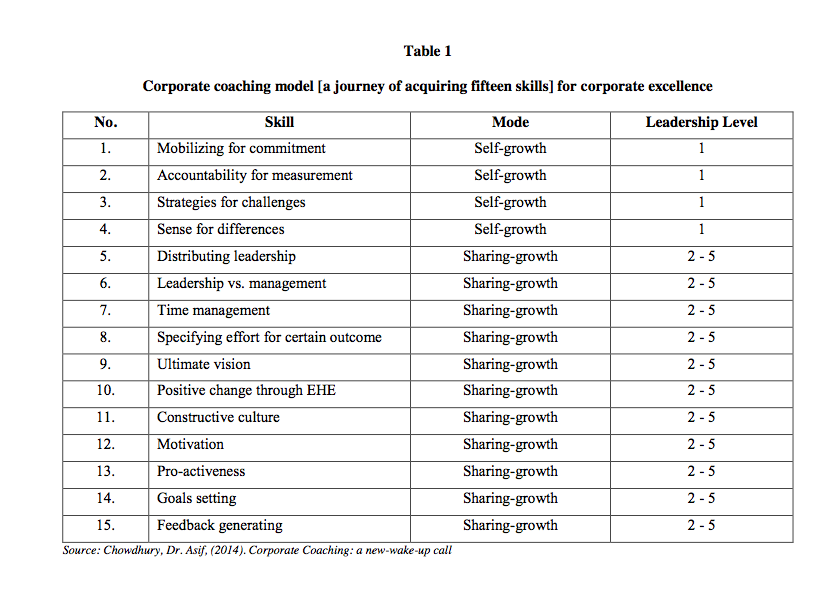
Abstract
Our world is now focusing on solutions; all the corporate-world is similarly seeking solution-based actions. Eventually, more or less, everyone prefers to ‘overcome’ the ‘crisis’; here, we are highlighting the two terms: overcome and crisis. We do treat any challenge as critical now as possible as ever; as simply because we have come to know many aspects in any actions or approaches; therefore, our concerns are at extreme level. The real scenario might not be as panic or challenging as we treat. Another impact on this too much critical analytical mode of thinking is affecting us negatively to keep patience and have an insightful solution; rather doing so, we just simply try to overcome so called crisis and keep on our journey of glory! But, we in this regard forget the fact that the more we build high raise building so fast but if there is any quality lapse in foundation, sooner or later, we will face the total collapse! That means, we need to reach to the ultimate level of corporate excellence but the question is how? We have to keep in our belief that to ensure corporate excellence or ultimate ideal corporate culture, we must not depend on one man’s input or dynamics, in fact, we need to assure everyone’s involvement as part of their contributions; only then, corporate growth can have its sustainability with consistency that can lead us towards to the journey or ultimate excellence. To ensure, each and every employee’s contribution with a clear and understandable vision, specified mission and agreed strategies, we need to secure unification in the work-place environment. In this case, all the employees’ self-growth and sharing-growth can assist us to maintain that. While we work on our self-growth and sharing-growth reflects the action of coaching; as a result, we can say, business excellence can be achieved through corporate coaching.
Introduction
Coaching is widely recognized as one of the fundamental leadership styles that top leaders need in order to operate effectively. The matter of fact is that tailored programmes are embraced as rapid personal growth opportunities to ensure that clients become continually more competent, confident and self-reliant. Nevertheless, coaching achieves a greater balance between work and personal life and the time taken for reflection is valued. Also a coach brings fresh perspectives, ideas and insights and clients can bounce ideas off them whenever they want. Moreover, the coach assists the client in making a strong commitment to empowering themselves, to taking action, to understand their potential, to learn and grow. As far as my model, as presented in this paper is concerned, I believe, in the corporate world it is obvious to meet and match employees/ executives vision and mission along with their employer so that this journey can pursue the ultimate corporate excellence. Therefore, an executive needs to ensure first of all his/ her ‘self–growth’ before meeting or facing other team members; once he/ she is well off with his/ her own self-growth, he/ she needs to acquire ‘sharing growth’ as much as possible by considering all means of challenges. Only then, in my point of view, corporate excellence can flourish and transform towards implementation.
Methods and Results
First of all, we need to redefine the leadership development process; in this case, there are five core levels have been identified: apprentice (level 1), executive (level 2), prospective (level 3), prospective (level 4) and ideal (level 5). Once an employee joins at work, eventually his leadership journey begins as long as he continues the momentum. After successful apprentice phase, his journey turns around into three segmental executive-modes: under induction, regular and senior; after then he moves to the glory of ‘stake’ and enters to the level of prospective leadership. This way he contains the full probability of reaching the ultimate pinnacle stage. The matter of fact, once he was the apprentice he had to ensure his ‘self–growth’ before facing ‘mass’, i.e., dealing with superiors or colleagues; once he completes apprenticeship, he needs to activate his ‘sharing-growth’ when he often involves in dealing with ‘mass’. ‘Sharing– growth’ reflects the contributory role of an employee. Both ‘self–growth’ and sharing–growth’ are considered as vital skills to ensure the journey towards corporate excellence. There are four skills that an employee needs to avail under ‘self–growth’ and eleven under ‘sharing–growth’. Therefore, ‘self–growth’ and ‘sharing–growth’ is named as a corporate coaching model.
We can better rephrase the word: ‘administration’ for our simplifying style of learning. Admi—- n —- i —- s —- t —- r —- at —- i —- o —- n [Admiring neutral innovative staff for thriving regular attributes with intelligence oriented notions]. Administration is such a guardian for the organisation who can guide the entire journey on towards vision by
each and every personnel and leaders well for ensuring the admiration for the neutral and innovative staffs who have been dedicated and thriving their best regularly and consistently with their available intelligence for the sake of quality corporate excellence. Therefore, a combined all-out effort is required to making sure its sound performance, otherwise, if administration fails, it will drastically be shutting down everything. So, it is not only essential element to ensure corporate excellence but also the unavoidable task to ensure future sustainability and growth. Here, the confusing part, whether administration will play a hard and harsh role or soft and smooth. The answer is better not to be either of them; it will be wise if administration can disclose itself as a proper and perfect. Now, there is another hidden dim need to be flourished under the spotlight: whether the top-management prefers to establish and run proper and perfect ‘administration’ or rather they are willing to make ‘run as you go’.
Now, we would like to talk about say 100-words or terms and having our observations on ideal usage-ability in corporate practice.
Data analysis and extracting facts:
From the above table, out of total of 100-terminology corporate phenomena, GREEN = comfortable in enriching Ideal Corporate Culture [ICC] [57] RED = cause hindrance in building ICC [26]
YELLOW = cautioned-use advised [17]
Learning plays the vital role to enhance leadership development; ultimately, this is the journey of unifying employees’ vision aligned with organisational vision to reach the corporate excellence. This learning is the mixture of knowledge and practice. From our study, we have found, while joining as a fresh employee, we ensure our knowledge (maturity range 50%); with the progression of time, we keep on practising our knowledge (apprentice level and the level of self- growth) (maturity range 51 – 64%) and after that phase our real learning starts (from the level of Executive till Ideal Leadership benchmark with sharing-growth) (maturity range 65 – 100%). Therefore, to maintain the legacy of a successful contributor, there is obviously a need of coaching.
As it applies to the workplace, however, coaching is a much more recent development. There has been individualized training in the form of apprenticeships for hundreds of years, but the earliest form of such coaching as we know it today was called “developmental counseling” (Flory, 1965). Kampa-Kokesch and Anderson (2001) report that from 1940 to 1979, coaching tended to be performed by organization consultants. During this initial period, coaches were primarily psychologists and organization development (OD) professionals who were focused on OD issues. There was often an informal aspect to it. For example, an executive coach who remembers this period recalls a CEO stopping her in a hallway and asking if she could stop by and chat for an hour or two.
From 1980 to 1994, the field of coaching experienced rapid growth, quickly expanding into many new areas of service (life coaching, outplacement, career coaching, etc.). According to Hudson (1999), the field was accelerated by complexities associated with increased downsizing, mergers, acquisitions, and outplacement. The leader’s role evolved to deal with rising levels of ambiguity and pressures to perform in an increasingly global context. Top managers were asked to be both strategic decision makers and masters of the “soft” skills required to effectively manage people (Sherman & Freas, 2004).
From 1995 to the present, the amount of executive and workforce coaching has continued to grow. There has been an increase in the number of publications devoted to coaching, in organizations that offer training to coaches, in the establishment of coaching organizations, and in the focus placed on coaching research by academia. International Coach Federation [ICF], 2013 Annual Report says: they have 20,636 total members across the globe; and among them 12,000 professional coaches in 117 countries. However, because the field is wide open to anyone who wants to enter, it is difficult to know the exact number of people performing coaching services.
Today’s coaches come from myriad backgrounds and professions, including business, law, teaching, human resources, and sports (Harris, 1999; Kilburg, 2000), and they don’t necessarily join coaching organizations. According to the literature, leadership development is often viewed as the purpose of most coaching assignments (Underhill et al., 2007).
Organizations also employ coaches to help with leader transitions (such as promotions, lateral moves, or international assignments), to retain high potentials, to improve performance that is off track, and to help individuals assess where their career is now and where it may go next.
Some coaching focuses on honing specific business skills. For example, one company helps leaders learn to be more productive by giving them coaching on improving their organizational skills. Coaching is tied to training programs in some companies. For example, a manager attends training for some specified number of hours and then gets individual
coaching to reinforce and apply things learned in the workshop. There is also “life coaching,” which helps clients set and achieve goals in aspects of their lives other than just business.
However, by considering all the concerns and available thought, I would like to offer a definition as follow:
-
- Coaching is indeed, a way of:
- learning through gaining knowledge
- learning through practice
- revealing self-expertise and caliber
- sharing the self-dynamism and expertise with others
- being someone special among others
- achieving the pinnacle stage of success
- keeping the momentum
- reviewing and resuming!
- Therefore, we can say, Coaching is a Journey of transforming: None [Zero*] → Someone [Individual] → Among [Member] → Crown [Leader] * = in leadership perspective. According to the AMA [American Management Association] survey 2008, there are various reasons that organization prefers to use coaching. Improving Individual Productivity The survey found that, although leadership development is among the top two reasons for using coaching, the desire to improve individual “performance/productivity” is actually the most widely cited purpose. There is, of course, clearly some overlap among these purposes. After all, organizations develop leaders not for leadership’s sake but for the purpose of improving both individual and organizational performance. Individual performance, productivity, and development, however, seem to be the higher priorities. Other literature supports the coaching/performance link. For example, management strategist and author Florence M. Stone (2007) notes that heightened productivity is one of several benefits attained through coaching interventions. Employers will value cost reductions and greater profits associated with coached employees who respond productively to appropriate praise, clarified work objectives, and strategies on how to exhibit special talents. Stone says coaching can also remove the element of surprise from performance reviews for coached employees who have already been apprised of their strengths and weaknesses. And manager/coaches with good people skills will likely get credit for allaying workplace friction that often slows organizational productivity. Six out of ten participants in the AMA/Institute for Corporate Productivity survey also chose “increasing individual worker skill level” as the reason their organizations used the services of executive coaches either frequently or a great deal. These results offer support to some previous studies. Joo (2005), for example, states that the most fundamental purposes of coaching are directed at skills and behaviors that must occur at the individual level: behavioral change, self-awareness, and learning.
Improving Organizational Performance
About 56% of respondents reported using coaching either frequently or a great deal of the time in order to improve organizational performance. Why does organizational performance take a backseat to individual performance? There are two primary reasons.
First, coaching tends to be aimed at individuals rather than groups, separating it from many other types of training and development. Second, Feldman and Lankau (2005) argue that improvements in organizational performance only take place once a large number of employees have received coaching. Before organizational performance reflects positive changes due to coaching, a coaching culture—in which coaching is widely utilized and strongly supported by top management—must exist.
Addressing Workplace Problems
About 44% percent of respondents cited “addressing specific workplace problems” as the reason why their companies frequently use coaching. Although this is a substantial group of responses, this number has probably declined in recent years. The 2008 Sherpa Executive Coaching Survey reports that, in coaching’s early days, coaching was used primarily as a tool to deal with an executive who wasn’t meeting expectations. As a result, the thinking was that “there must be something wrong or you wouldn’t need a coach.” While the results of this survey confirm that coaching is still a problem-solving mechanism, other purposes have usurped its previous prominence.
Boosting Employee Engagement
The past decade has also seen an explosion of research into the area of positive psychology: “the scientific study of what makes people function at their best and experience fulfillment and well-being” (Hall, 2005). Positive psychology emphasizes what is working, what one does well, and how to do it better, instead of discussions of weakness and limitations. Employees who receive coaching are often successful senior leaders who are facing career challenges as a result of organizational or industry changes. Many experts agree that a plan to capitalize on executives’ strengths—what got them to positions of prominence in the first place—is more useful than to focus on shortfalls (Buckingham & Clifton, 2001). So, it is not so surprising that “boosting employee engagement” is cited by about 41% of respondents as the purpose for which their organizations use coaching.
Clearly, the stigma of coaching as a consequence for poor performance is changing, as evidenced by the fact that almost as many respondents view coaching as an engagement tool as they do a way to address workplace problems.
Improving Retention Rates and Recruitment Outcomes
Thirty-eight percent of respondents reported that their organizations use coaching frequently or a great deal as a way to improve retention rates, while 24% say coaching is used in their companies to improve the outcome of the recruitment process. As employees increasingly value training and development as portable and highly valuable job perks, the promise of executive coaching becomes more significant. Companies are betting on the premise that the opportunity to work with an experienced coach will convince desired recruits to accept a job offer and star performers to stay on.
Other than the above factors also rapid change in the global business environment is accelerating the use of coaching, according to a report in Harvard Management Update. Traditional management approaches, analysts say, can’t cope with today’s faster–paced business processes. Today’s executives have to deal with peer relationships and greater workplace diversity, which require a more complex skill set than managing “up and down” does, says executive coach Catherine Fitzgerald.
Some experts think coaching is the most convenient and flexible way for leaders to come up the learning curve quickly enough to handle the competition and speed of global business cycles.
Executives’ excessive time demands render other training models obsolete (Keller Johnson, 2007). Jessica Jarvis (2005), a training advisor with the Chartered Institute of Personnel and Development, says fever-pitched global competition is driving radical organizational restructuring that calls for highly specialized staff support, rapid shifts to new skill sets, and “just-in-time” training, all of which suggest the need for effective coaching interventions.
Meanwhile, attitudes within the labor force are also changing. Lifelong learning, which is a contemporary cultural phenomenon, resonates well with both coaching and mentoring, as does the heightened interest in personal responsibility for self-development. The media’s preoccupation with coaching has further intensified public interest, says Jarvis.
Conclusions
Now, the question is how this corporate coaching can be operated to ensure business excellence? I believe, as discussed throughout this paper the DAC Corporate Coaching Model can play the positive role. This model is the structure which allows its followers, i.e., executives or employees to enhance their values especially by means of accelerating productivity and efficiency. I believe, DAC Corporate Coaching Model is something unique and at the same time effective for the corporate world as a “Complete Pack”; without for example further dependency on other Leadership or Management or HR or Team Building or programmes. As yet this model has not been vastly implemented or investigated by submission to any corporates houses. However, this will soon be initiated. This is the only limitation at this point in time I can acknowledge apart from the lack of research evidence. With the progression of time, this limitation is going to be overcome, undoubtedly.
Proposals & Recommendations
After having a wake-up discussion, we would like to bring into your attention few points to consider finally for future proceedings. Therefore, we are putting down few proposals and recommendations for your fruit for thought:
- Let us redefine leadership
- Leadership journey needs to be drawn as soon as an employee completes his apprenticeship
- Leadership is better not to be benchmarked with the position status by an individual of an organisation
- Prior starting up the leadership journey, all the employees need to ensure their self-growth; only then, they can be involved with mass and participate in their contributory role with an intention of sharing-growth
- Self-growth and sharing-growth of an employee is to assure his corporate involvement being aligned with corporate vision so that corporate excellence can be possible for the organisation to reach and maintain
- Rethinking of the pavement of establishing an ideal corporate culture where there will be no subordinates and superiors but everywhere co-contributors
7. Needs to treat employees as capital than resources only.
Finally, to sum up, we can say, further research and experiment will provide ample boost in our confusing mind to start trusting on this approach and put on more admiration!
Bibliography
Chowdhury, Dr. Asif, (2014). Corporate Coaching: a new-wake-up call, ISBN 978-1493559619.



















